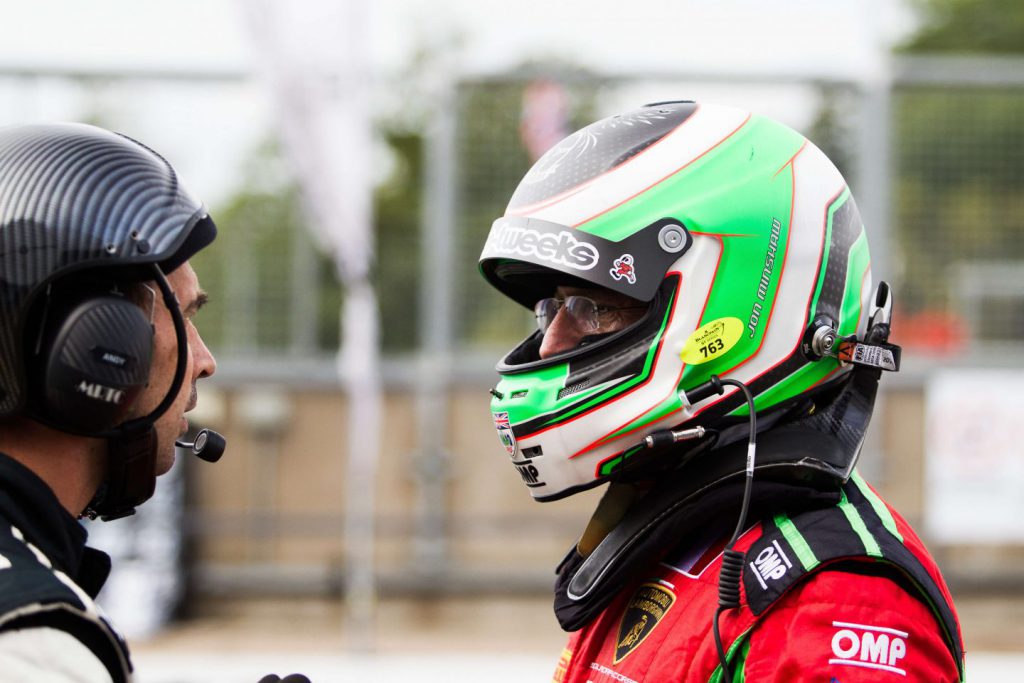
Well, quite simply, very little! “FHR” stands for “frontal head restraint” – and from now on is the name you’re probably going to see used most often when referring to the device that used to be known as a HANS (head and neck support). HANS is now a trademarked term – so only certain manufacturers are allowed to use it. It’s really the same thing as asking, “What’s the difference between a Hoover and a vacuum cleaner?”
Are some FHR’s better than others?
This is a common question that we get from customers, and the answer is that it really depends on what you mean by ‘better’! All FHRs are designed to offer the same level of frontal protection in the event of an incident. They are all are approved to FIA 8858-2010. The FHR collar designs do vary in weight, some weigh less than others (and it probably won’t surprise you to hear that these tend to be the more expensive models in terms of construction!) In a professional racing environment where weight is more of an issue than budget, this means that important savings can be made – whilst clubman competitors are offered the similar level of protection at a more affordable price. FHR Hybrid systems can also offer some side protection due to their triangulated webbing design (these are covered below)
The key is really to ensure that all the components of your FHR (or any safety-related system for that matter) consist of genuine products. Purchasing from Demon Tweeks ensures this – whilst of course meaning that you reap the benefits of the decades of experience we have at our disposal to help you make your choice. Any questions you have can, of course, be directed to our expert Sales Team.

Why do I need an FHR ?
Once you understand the benefits that an FHR can bring to you, the question you’ll probably be asking yourself is actually ‘why would I not buy one?’! Quite simply, these things save lives.
If you are unfortunate enough to be involved in an incident during a race and you are not wearing an FHR, then your harness is likely going to do its job and stop your body from moving forward. But think about what your head will be doing whilst all those G-forces are resolved. Whilst your body itself is restrained by your harness, without an FHR, there is nothing to stop your head from snapping forward – this can place immense strain on your neck. Add to this the fact that your head is already being made heavier than normal by the added weight of your helmet, and you have a recipe for trouble. This type of impact can cause Basilar skull fractures – a very specific type of fracture that is often associated with motorsport. Unfortunately, these types of fractures can be fatal in some cases and have claimed the lives of many top competitors over the years – Roland Ratzenberger and Dale Earnhardt Senior to name just two.
An FHR provides a means by which your head will be stopped from traveling forward in the event of sudden deceleration – taking the strain away from your neck and dissipating it in a controlled manner. This provides an excellent defence against the type of skull fractures that have claimed so many lives over the years – which is why FHRs are now mandatory in most racing series.
Motorsport UK from 2016 mandated the use of FHR’s in all forms of circuit racing, stage rallying, hill climbs and sprints (with exceptions for certain historic vehicles or classes) We are sure this has made many accidents survivable that before this date may have had tragic circumstances.
Motorsport UK Rules & advise :
All Stage Rally competitors must use FHR.
All drivers in circuit racing in post 1976 cars must use FHR
Use of by drivers in circuit racing in pre-1977 cars is recommended.
How many degrees of recline do I need?
You may have noticed that FHR are available in a number of different ‘reclines’. This is important where your comfort is concerned – so we advise that ideally you should pay a visit to our Superstore in Wrexham and have one of our expert sales staff show you the range to let you try on a few options. Obviously, this isn’t always possible – and the world isn’t exactly bursting at the seams with Motorsport Superstores full of FHR’s – so below we’ve included a rough guide that will tell you which angle will most likely suit the type of racing that you are doing. The angle of the device is mostly determined by the seat recline; however, chest / ribcage shape can also make a difference to the angle. A driver with very pronounced chest muscles might use a different angle than a driver with a very flat ribcage in the same car.
If you compete in multiple formulae, then you might be interested in the Simpson Hybrid devices. These FHR’s are not angle specific and allow the driver to be comfortable at any angle – no matter what type of car you are in.
Twenty-degree FHR’s are our top sellers. This angle suits most people who are competing in saloon, sports car, or historic racing. Because of the angle’s popularity, you will find that most FHRs tend to be available with it as an option. We offer a large selection of these to suit every budget or weight requirement.
If you drive a single-seater race car, then the likelihood is that you will be best suited by a thirty-degree FHR, due to its slightly shallower angle. Again, we offer a large selection of these to suit every budget or weight requirement.
Which Size?
The FHR’s are commonly sized medium or large (there are other sizes available) This relates to the wearers collar size in cm’s or inches, same principle as selecting a shirt collar size. If the wearer does a lot of gym work and has pronounced muscles at the join between the collar bone and neck. It can be more comfortable to go larger than the actual neck size measurement. Don’t forgot to allow room for your suit collar and fireproof top if you are borderline on the dimensions!
What is a hybrid FHR?
Rather than using the established over-the-shoulder harness method of securing the head, a new breed of FHR Systems from Simpson Motorsport uses an innovative series of straps around the torso to provide protection, not only in the fore and aft directions, but also against side impacts – where the head is most likely to be forced left or right. This is of particular interest to drivers of saloon and rally cars – where side impact protection for the head is often limited when compared to a single-seater formula car. The Hybrid FHR’s also make getting in and out of the car especially for cars with high door bars and seats with wrap around head restraints. The quick release system makes this even easier, helps faster exit if doing driver changes. The Hybrid FHR’s are also more comfortable if you have collar bone issue from previous fractures etc. These are also very popular with female competitors as the conventional FHR does not always suit the female anatomy very well. The hybrid FHR is available in a specific female version for the best fit.
FHR-Specific Harnesses
If you’ve spent any time browsing our website, you’ve probably noticed that some race harnesses are advertised as being FHR specific. Whilst these models can offer certain advantages to the FHR user, they are by no means essential.

In the case of FHR-specific harnesses, what you are getting is a harness that is narrower (2″ rather than the usual 3″) in the area where it passes over the FHR device. This is helpful, in that it often makes it easier to fit the FHR correctly – but you must remember that such harnesses are only allowed when used with an FHR System. These are by no means a required fitment, but rather something that you may want to consider if you’re building an FHR-specific setup in your car. Assuming that it is set up correctly, a 3″ harness will be perfectly safe for use with an FHR device – it’s simply that 2″ FHR-specific models make that correct set up easier to achieve. The FIA has recently approved harnesses that are 2” on all straps ( shoulder straps included ) these will also work perfectly with the FHR. Suitable harnesses carry FIA 8853-2016 Approval
FHR Harness Choice in Summary
3” Shoulder & Lap = Acceptable & safe but shoulder straps will overlap FHR, can be used if FHR not being used.
2” to 3” Shoulder 3” Lap = Perfect with FHR but can only be used with FHR not accepted when the FHR is not being used.
2” Shoulder and 2” Lap with FIA 8853-2016 Standard = Perfect with FHR but can only be used with FHR not accepted when the FHR is not being used.
Enjoyed this? Read more of our latest news:
Where To Next?
Looking for the latest motorsport parts and accessories? Check out our wide range from top brands.
Come and visit us at our store, showroom and fitting centre in Wrexham.
Want to know more about our story? Learn about who we are and why we’ve been driven by passion for over 50 years.
Interested in everything we do? Catch up on all the latest Demon Tweeks news.




